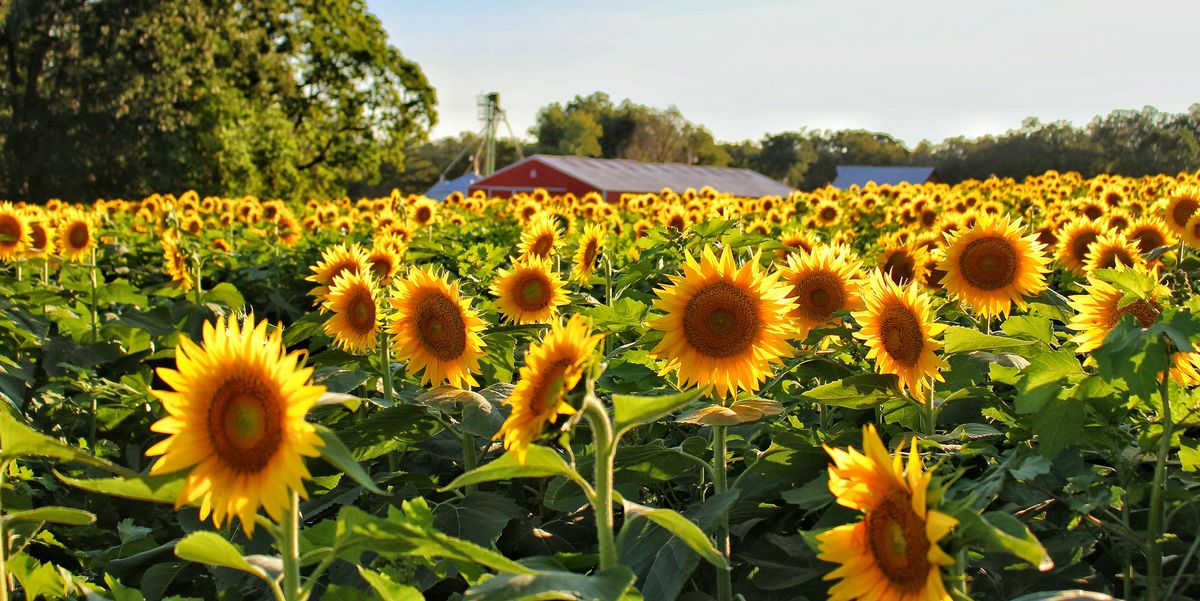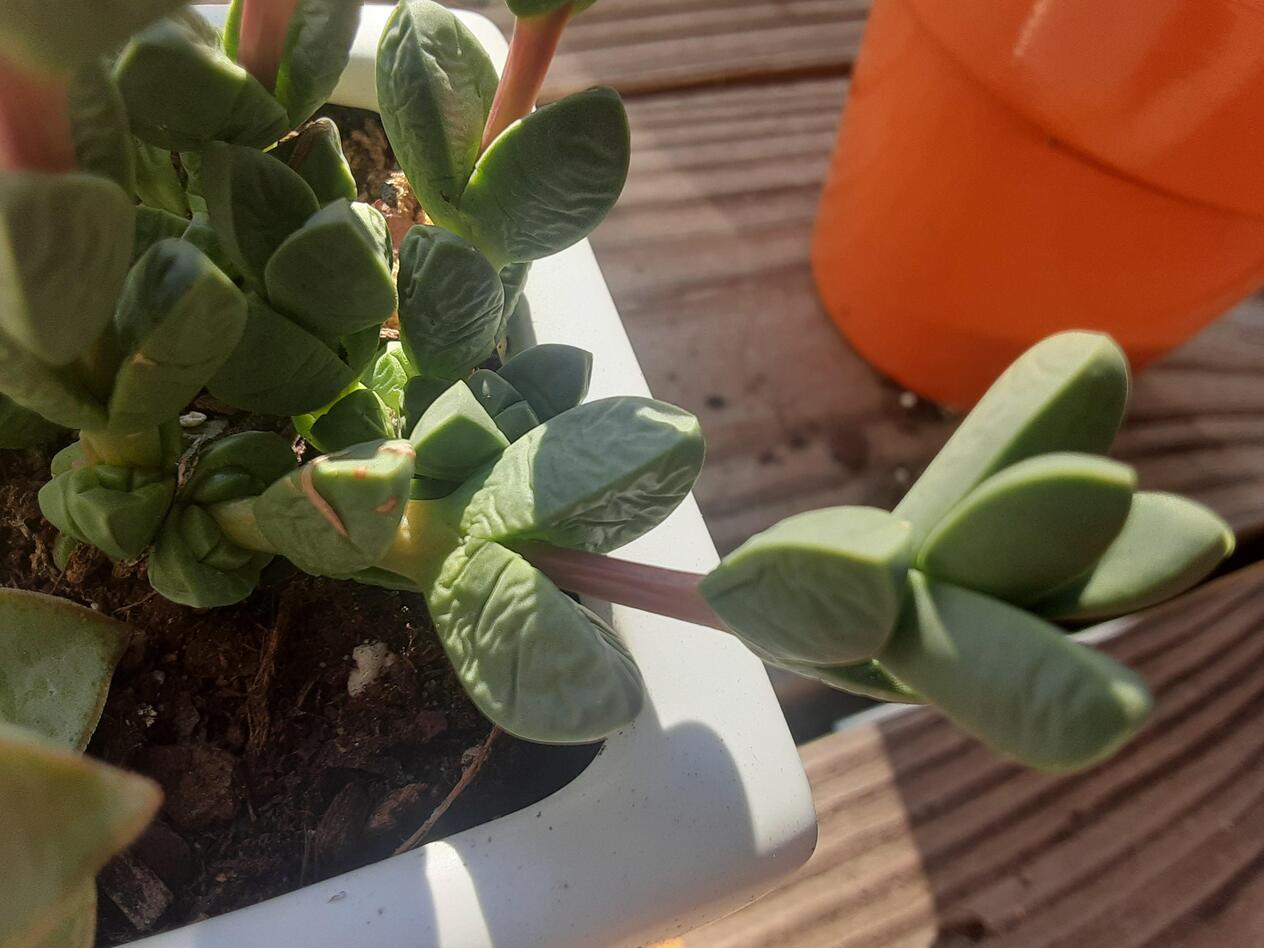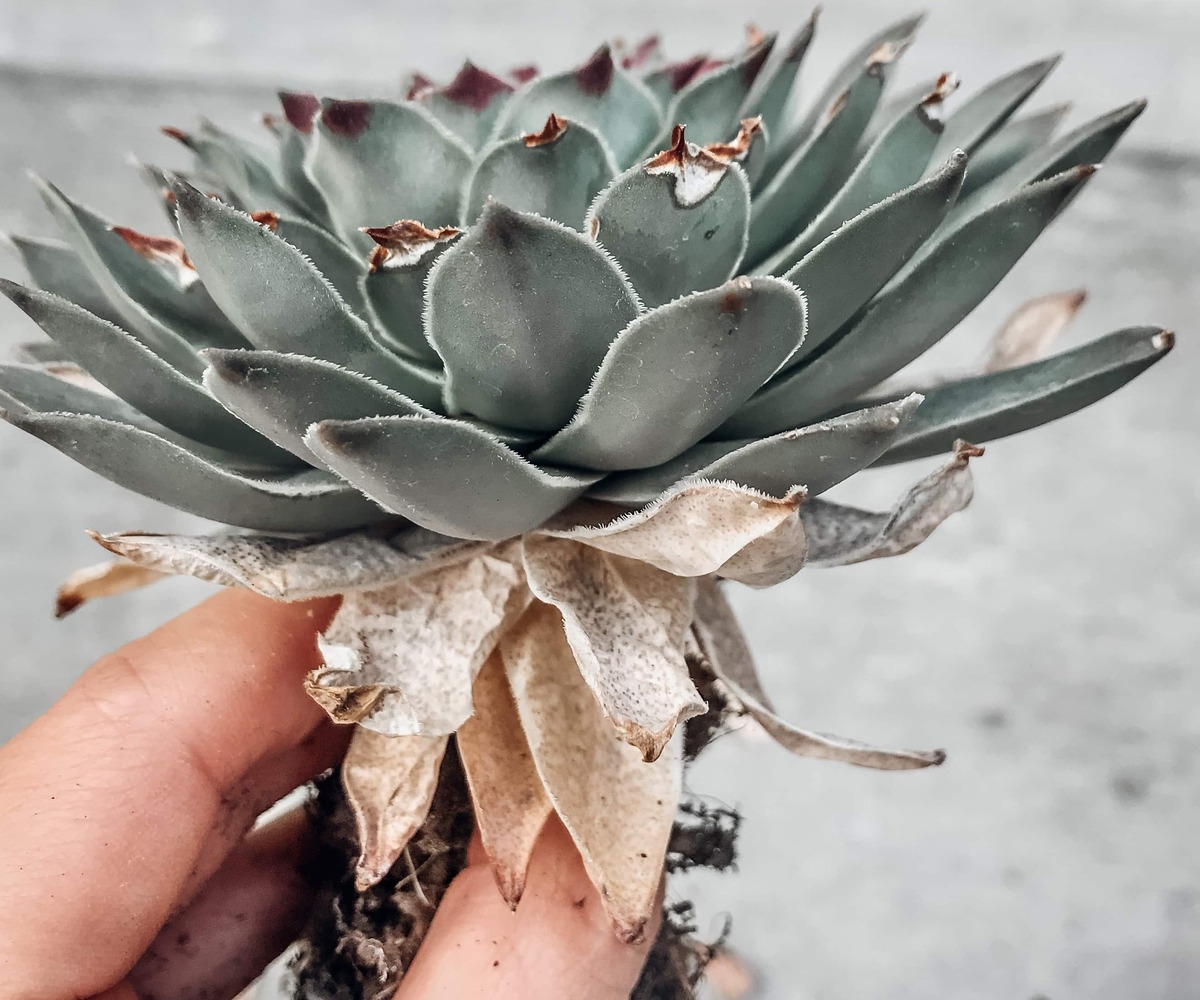Home>Types of Gardening>Ornamental Gardening>Why Are My Sunflowers Drooping In A Vase


Ornamental Gardening
Why Are My Sunflowers Drooping In A Vase
Modified: January 22, 2024
Learn why your sunflowers are drooping in a vase and how to prevent it. Get expert tips on ornamental gardening to keep your flowers looking vibrant and fresh.
(Many of the links in this article redirect to a specific reviewed product. Your purchase of these products through affiliate links helps to generate commission for Chicagolandgardening.com, at no extra cost. Learn more)
Table of Contents
Introduction
Welcome to the world of ornamental gardening, where beauty and creativity blend harmoniously with nature. One of the most beloved and iconic flowers in this realm is the sunflower. With its vibrant yellow petals and towering presence, the sunflower has captured the hearts of gardeners and enthusiasts around the world.
However, as any gardener knows, the journey of a sunflower doesn’t end when it is plucked from its stem. Once cut and placed in a vase, sunflowers may start to droop, losing their radiance and charm. If you’ve ever wondered why your sunflowers are slumping in a vase, fret not! In this article, we will explore the factors that can cause sunflowers to droop and provide you with valuable tips on how to keep them looking fresh and upright for longer.
Understanding the lifecycle of sunflowers is crucial in deciphering the reasons behind their drooping. Sunflowers, scientifically known as Helianthus annuus, are native to North America and are a member of the Asteraceae family. These magnificent flowers are well-known for their ability to track the movement of the sun from east to west, a phenomenon known as heliotropism.
When grown in the garden, sunflowers can reach astounding heights, sometimes towering over 15 feet tall. Their large, disk-like centers, surrounded by bright yellow petals, have an undeniable charm that attracts pollinators and captivates admirers. But what happens when these sunflowers are cut and placed in a vase?
Once separated from their roots, sunflowers lose their ability to access nutrients and water through their vascular system. As a result, they become reliant on the water in the vase to sustain their vitality. However, various factors can disrupt this delicate balance and cause sunflowers to droop prematurely.
Join us as we delve deeper into the reasons behind sunflower drooping and discover how to prolong their beauty and grace even after being cut and placed in a vase. Let’s uncover the secrets to keeping your sunflowers standing tall and vibrant!
Understanding Sunflowers
Sunflowers, with their bright and cheerful appearance, have long been recognized as symbols of happiness and optimism. These stunning flowers are not only a delight to the eye but also possess fascinating characteristics that make them unique in the botanical world.
Belonging to the family Asteraceae, sunflowers are native to North America and are characterized by their scientific name, Helianthus annuus. The name “Helianthus” is derived from the Greek words “helios” (sun) and “anthos” (flower), paying homage to their renowned heliotropic behavior of following the sun throughout the day.
The life cycle of a sunflower begins with a small seed that germinates into a young plant. As it grows, it develops a sturdy stem and broad, heart-shaped leaves. Eventually, the sunflower produces a single flower head containing hundreds or even thousands of individual flowers.
The central disk of the sunflower head is composed of tiny, tubular flowers that will eventually mature into seeds. Surrounding this disk are the iconic bright yellow (and sometimes red or orange) petals known as ray flowers. Together, these flowers create a striking and visually captivating appearance.
In addition to their aesthetic allure, sunflowers have practical uses as well. They are an excellent source of food for pollinators, such as bees and butterflies, who are attracted to the nectar and pollen-rich flowers. Sunflower plants also produce edible seeds, which can be roasted or used to extract sunflower oil.
Another interesting aspect of sunflowers is their impressive height. Depending on the variety, sunflowers can grow to towering heights, with some reaching over 15 feet tall. This extraordinary growth is due to the rapid elongation of the stem, as well as the ability of the sunflower to optimize its growth towards sunlight.
The phototropism exhibited by sunflowers is a phenomenon known as heliotropism. During the early stages of growth, young sunflowers face east in the morning and track the movement of the sun across the sky throughout the day, ultimately facing west by sunset. This behavior ensures that the flower head receives maximum sunlight for photosynthesis and maximizes seed production.
By understanding the anatomy and behavior of sunflowers, we can better appreciate their marvels and provide them with the care they need, both in the garden and as cut flowers in a vase. The next section will delve into the various factors that can lead to sunflowers drooping after being cut and placed in a vase.
Factors that Cause Drooping in Sunflowers
While sunflowers are known for their resilience and beauty, they can still experience drooping when cut and placed in a vase. Understanding the factors that contribute to this drooping can help us take the necessary steps to prevent it and keep our sunflowers looking vibrant and upright for longer.
One of the primary reasons sunflowers droop is water deprivation. When sunflowers are severed from their roots, their ability to absorb water is compromised. Without an adequate water supply, the cells in their stems begin to dehydrate, causing the sunflowers to wilt and lose their upright posture.
Excessive heat can also contribute to sunflower drooping. Sunflowers are generally tolerant of warm temperatures but can suffer from heat stress if exposed to intense heat for prolonged periods. High temperatures can accelerate water loss through transpiration, leading to wilted and drooping sunflowers.
Poor water quality is another factor that can impact the longevity of sunflowers in a vase. Contaminated or stagnant water can promote the growth of bacteria and fungi, leading to clogged stems and compromised water uptake. This can result in drooping and wilting of the sunflower heads.
Inadequate nutrient supply is yet another factor that can cause sunflowers to droop. Like all plants, sunflowers require essential nutrients to maintain their health and structural integrity. Insufficient nutrients can weaken the stem and result in drooping and wilting of the flowers.
Additionally, physical damage during harvesting or handling can contribute to sunflower drooping. Rough handling, improper cutting techniques, or accidentally bending or breaking the stem can disrupt the vascular system of the sunflower, impeding water uptake and causing wilting and drooping.
It’s worth noting that different varieties of sunflowers may have varying degrees of droopiness after being cut and placed in a vase. Some varieties, like the multi-flowering types, may naturally have smaller, more delicate stems, making them more prone to drooping. Others, like the giant sunflowers, have sturdier stems and may maintain their upright position for a longer period.
Understanding these factors that contribute to sunflower drooping can help us address these issues proactively and take the necessary steps to keep our sunflowers looking fresh and upright in a vase. In the next section, we will explore the proper techniques for harvesting and preparing sunflowers to maximize their longevity as cut flowers.
Harvesting and Preparing Sunflowers for a Vase
The key to prolonging the life of cut sunflowers lies in the proper harvesting and preparation techniques. By following these steps, we can maximize the longevity and beauty of our sunflowers in a vase.
Firstly, it’s crucial to choose the right time to harvest sunflowers. Wait until the flower heads are fully open and the petals have unfurled. At this stage, the sunflower has reached optimal maturity and will have a longer vase life. Avoid harvesting sunflowers too early when their petals are still tightly packed, as they may not fully bloom once placed in a vase.
When harvesting sunflowers, use a clean, sharp knife or pair of shears. Make a clean cut at a 45-degree angle, approximately one inch above the soil level to ensure a fresh and healthy stem. Avoid crushing or damaging the stem as this can hinder water absorption and contribute to drooping.
Immediately after cutting, place the sunflowers in a bucket or container filled with clean water. This step is crucial to prevent air bubbles from entering the stem and blocking the flow of water. Allow the cut sunflowers to hydrate in the water for at least two hours before arranging them in a vase.
Prior to arranging the sunflowers in a vase, it’s essential to remove any excess foliage or smaller leaves that will be submerged in the water. These submerged leaves can decay and introduce bacteria to the water, compromising the health of the sunflowers. Leave a few leaves near the top of the stem to enhance the aesthetic appeal.
When selecting a vase for your sunflowers, opt for a clean container with a wide mouth that can accommodate the sunflower heads without crowding. Fill the vase with fresh, clean water, ideally at room temperature. You may also choose to add flower food or a homemade solution of sugar and vinegar to provide additional nutrients for the sunflowers.
Before placing the sunflowers in the vase, recut the stems at a 45-degree angle to create a fresh surface for water absorption. Remove about an inch or two from the bottom of the stem to ensure that no air bubbles or blockages are present. Immediately place the cut stems in the prepared vase, ensuring that each stem reaches the water level.
Position the vase in a cool, well-lit area away from direct sunlight and drafts. Sunflowers prefer bright light but excessive heat or cold drafts can contribute to drooping. Regularly monitor the water level in the vase and change it every two to three days, along with recutting the stems to maintain optimal hydration.
By following these steps, you can ensure that your harvested sunflowers are properly prepared for their vase life. Now that we know how to harvest and prepare sunflowers, let’s explore the important care practices that will help keep them standing tall and vibrant.
Caring for Sunflowers in a Vase
Once sunflowers have been harvested and prepared for a vase, it’s crucial to provide them with proper care to maintain their freshness and prolong their vase life. By following these care practices, you can help your sunflowers stay vibrant and upright for as long as possible.
The first step in caring for sunflowers in a vase is to ensure that they have an adequate water supply. Sunflowers are thirsty plants and require a generous amount of water to stay hydrated. Check the water level in the vase daily and replenish it as needed to ensure that the stems are fully submerged. Adding floral preservative or flower food to the water can also provide additional nutrients and help prolong the life of your sunflowers.
Regularly monitor the cleanliness of the water in the vase. As the sunflowers age, they may release sap or bacteria into the water, which can cause clogging and hinder water uptake. If you notice cloudiness or foul odor in the water, replace it with fresh, clean water and recut the stems to remove any potential blockages.
Keep your sunflowers in a cool, well-lit area away from direct sunlight and sources of heat. Sunflowers prefer bright light but can wilt quickly if exposed to high temperatures. Avoid placing them near appliances or heating vents, as this can accelerate water loss and contribute to drooping.
Another important aspect of caring for sunflowers in a vase is removing any wilted or decaying flowers or foliage. As sunflowers age, some petals may start to wilt and fade. Remove these petals promptly to prevent the release of harmful bacteria and to maintain the overall aesthetic appeal of the arrangement. Also, check for any leaves or debris that have fallen into the water and remove them to keep the vase clean.
Occasionally misting the sunflower heads with water can help maintain their hydration levels and keep them looking fresh. However, be careful not to mist the petals excessively, as this can promote the growth of mold or fungus. Lightly spritzing the back of the sunflower heads can help provide them with a refreshing boost.
Lastly, avoid placing sunflowers near fruits or vegetables that release ethylene gas, as this can accelerate the aging process and lead to premature wilting. Ethylene gas is naturally produced by ripening fruits and can have a detrimental effect on cut flowers. Keep your sunflowers away from the fruit bowl to protect their longevity.
By following these care practices, you can ensure that your sunflowers stay fresh, vibrant, and upright in a vase for an extended period. Now that you know how to care for sunflowers, let’s explore some additional tips to prevent sunflower drooping and enhance their longevity.
Tips to Prevent Sunflowers from Drooping
While sunflowers may be prone to drooping once they are cut and placed in a vase, there are several tips and techniques you can employ to help prevent this from happening. By implementing these strategies, you can keep your sunflowers looking fresh and upright for a longer period of time.
One effective tip to prevent sunflower drooping is to provide them with the proper nutrients. Sunflowers benefit from a nutrient-rich environment, so consider adding flower food or a homemade solution of sugar and vinegar to the water in the vase. These additives can provide the necessary nourishment to the flowers and help prolong their vase life.
Another crucial factor in preventing sunflower drooping is maintaining a clean and bacteria-free environment. Change the water in the vase every two to three days to avoid the buildup of harmful bacteria. Additionally, trim the stems regularly by recutting them at a 45-degree angle to prevent blockages and enhance water uptake.
Avoid placing sunflowers in direct sunlight or areas with excessive heat, as this can cause them to wilt and droop. Instead, position them in a cool and well-ventilated area away from drafts. Sunflowers prefer bright light, but direct sunlight can accelerate water loss and contribute to their premature demise.
Supporting the stems of cut sunflowers can also help prevent drooping. Consider using floral tape or supportive materials like flower frogs or grid arrangements to keep the stems upright and provide them with added stability. This helps prevent stem bending or drooping, allowing the sunflowers to maintain their majestic appearance.
Another useful tip is to trim the sunflower stems underwater. By submerging the ends of the stems in water and cutting them at an angle, you can prevent air bubbles from entering and obstructing water absorption. This technique ensures that the sunflowers receive a continuous and unimpeded water supply, helping them stay fresh and upright.
Consider placing a penny or a copper coin in the water of the vase. The trace amounts of copper released by the coin can act as a natural fungicide, preventing the growth of bacteria and fungi in the water. This simple trick can help keep the water clean and free from contaminants, prolonging the life of your sunflowers.
Lastly, keep a close eye on the condition of your sunflowers. Remove any wilted or decaying petals or leaves promptly to prevent the release of harmful bacteria into the vase water. Regularly inspect the water level and clarity, cleaning the vase if necessary, and ensuring that the stems are fully submerged in water.
By following these tips and implementing the appropriate care techniques, you can significantly prolong the life of your cut sunflowers and prevent them from drooping prematurely. With a little effort and attention, you can enjoy the vibrant beauty of sunflowers for a longer period in your home or floral arrangements.







